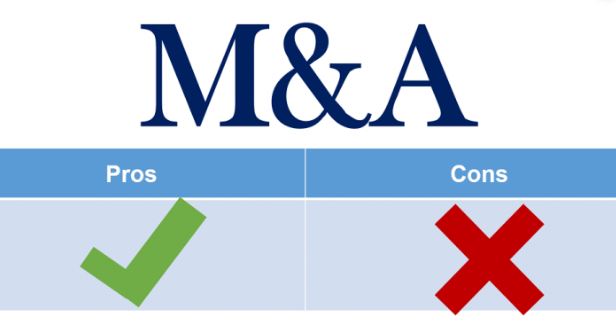
Table of Contents
Call them what you will – non-bank liquidity providers, principal trading firms, high frequency traders, electronic market makers – but this not-so-new-anymore breed of market participants is increasingly important to market liquidity, innovation and competition overall. They are now heavily involved in nearly every liquid and semi-liquid market in the world – equities, options, FX, futures, ETFs, U.S. Treasuries and most recently corporate bonds. And their trading strategies are as diverse as the asset classes and regions in which they deploy them, going much beyond market making and latency arbitrage. This is why calling them high frequency traders doesn’t really work anymore. Sure, a small few still make penny fragments based on ultra-low latency connections, but the vast majority are focused much more on using unique data to execute quantitative strategies that rely on having smarter algorithms as opposed to faster ones.
Similarly, while some principal trading firms still operate in non-descript offices and don’t want anyone to know who they are or how they trade, many of the largest and most successful are considerably more open and accessible than they were a decade ago. Over the past few years I’ve participated in public panel discussions with Jump Trading, Virtu and Jane Street to name a few – a group that only a few years ago would only hang out in the back of the conference with no name badges in hopes of not being recognized.
Now, Virtu is a public company, has a huge customer facing business and, through its ITG acquisition, now sells buy side trading systems and analytics. Jump Trading created Jump Liquidity, a strategy that trades both U.S. Treasuries, FX and other asset classes on a name-disclosed basis with customers. And Jane Street, a firm best known for its ETF arbitrage strategy, now trades corporate bonds with the buy side via RFQ. Clearly times have changed.
But with so much M&A and organic growth over the past several years, the path forward for the principal trading community isn’t clear. I am not in any way implying that the best years are behind them. Quite the contrary in fact. Despite the fact that some in the market still don’t trust this group and/or thinks they hurt rather than help liquidity, I do believe that in aggregate they do in fact improve overall market liquidity – both directly via the trading that they do (i.e. tightening spreads, offering firm pricing), but also indirectly by fostering greater competition and technology innovation amongst all bank and non-bank liquidity providers.
Partnerships and Mergers
So how does this market segment grow? One path forward could see global banks buying up principal trading firms (PTFs) and utilizing them to remake their trading operations. PTFs thrive in liquid and electronic markets – the same markets that have seen spreads tighten, costs increase and therefore profit margins disappear for the largest banks. Surgically implanting a hyper efficient, automated trading desk to handle such products – FX or US equities, for example – could improve liquidity provision for some banks while cutting out a ton of legacy cost.
However, if a PTF is suddenly owned by a bank they immediately lose one of their competitive advantages – not being a bank. Between increased regulatory requirements and a need to follow necessary yet often arduous big bank processes for technology development and deployment, it would be a tall order to ensure that one plus one equals at least two, let alone equaling three.
Tight partnerships, similar to BNP’s deal with GTS, could become more popular over time however. And given the number of banks that already take in live liquidity streams from PTFs today, the leap here isn’t a big one. The banks can be left to work with investors, but the PTFs can be the actual source of pricing – Intel Inside for Wall Street. Outsourced trading has become a popular technique for the buy side over the past few years; this is outsourced trading for the banks.
Another path forward would see the client facing portion of these previously insular firms expand dramatically, either through more M&A or by poaching the sell side, so they can more fully support the trading needs of the buy side. The market structure for most liquid markets has evolved to the point that large banks don’t make all that much money trading the products anymore. To a large extent, that is why the banks have worked to automate as much of the flow business as they can leaving their high paid, and most successful sales people and traders to focus on the most profitable clients and more complex trades. Therefore, client facing PTFs could increasingly handle this customer driven flow trading, utilizing their low cost base (a.k.a. far fewer people, and far more machines) and innovative use of technology to turn a better profit than the banks can.
The Caveats
As is usually the case, there are a few caveats here. First, some of the top tier banks have upped their trading games – market making, continuously streaming prices - to the point that they’re just as good (by whatever metric you chose) or better than some of the PTFs at trading. Second, many banks feel trading in flow products like U.S. Treasuries or FX is necessary to run a full service business, even if it doesn’t make them much money. Your checking account doesn’t make Chase a ton of money for example, but your mortgage and brokerage account do.
And lastly, these things take time. PTFs have done a commendable job of improving their reputations post-Flash Crash and post-Flash Boys. And while some “Flash” still exists, a few bad apples shouldn’t spoil the bunch.
Over the next few years expect more M&A, bigger PTF customer businesses and more technology for sale either directly from the PTFs, or from PTF exiles. And while of course I have no idea how this will really turn out in the long run, the point here is that this part of the market is long past the days of a few ex-floor traders in Chicago. They are a big part of the market, and they are here to stay.


